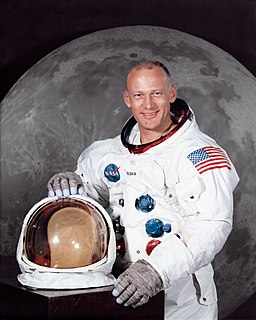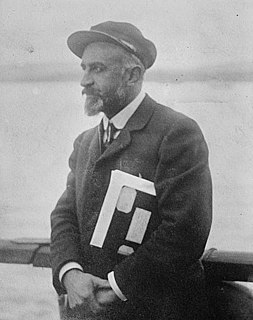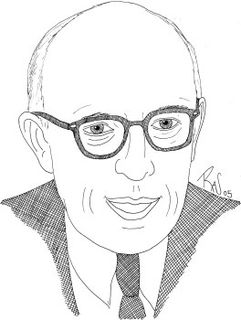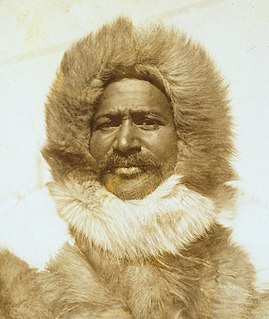 W
WThe Cullum Geographical Medal is one of the oldest awards of the American Geographical Society. It was established in the will of George Washington Cullum, the vice president of the Society, and is awarded "to those who distinguish themselves by geographical discoveries or in the advancement of geographical science". It was first awarded in 1896 to Robert Peary. The gold medal was designed by Lydia Field Emmet.
 W
WAlbert I was Prince of Monaco from 10 September 1889 until his death. He devoted much of his life to oceanography, exploration and science. Alongside his expeditions, Albert I made reforms on political, economic and social levels, bestowing a constitution on the principality in 1911.
 W
WBuzz Aldrin is an American former astronaut, engineer and fighter pilot. Aldrin made three spacewalks as pilot of the 1966 Gemini 12 mission, and as the lunar module pilot on the 1969 Apollo 11 mission, he and mission commander Neil Armstrong were the first two humans to land on the Moon.
 W
WNeil Alden Armstrong was an American astronaut and aeronautical engineer, and the first person to walk on the Moon. He was also a naval aviator, test pilot, and university professor.
 W
WRobert Bell was a Canadian geologist, professor and civil servant. He is considered one of Canada’s greatest exploring scientists, having named over 3,000 geographical features.
 W
WLouise Arner Boyd was an American explorer of Greenland and the Arctic, who wrote extensively of her explorations, and in 1955 became the first woman to fly over the North Pole privately chartering a DC-4 and crew that included aviation pioneer Thor Solberg.
 W
WRachel Louise Carson was an American marine biologist, author, and conservationist whose book Silent Spring and other writings are credited with advancing the global environmental movement.
 W
WJean-Baptiste-Étienne-Auguste Charcot, born in Neuilly-sur-Seine, was a French scientist, medical doctor and polar scientist. His father was the neurologist Jean-Martin Charcot (1825–1893).
 W
WMichael Collins is an American astronaut who flew the Apollo 11 command module Columbia around the Moon while his crewmates, Neil Armstrong and Buzz Aldrin, made the first crewed landing on the surface. He was a test pilot and major general in the U.S. Air Force Reserves.
 W
WAlbert Paddock Crary, was a pioneer polar geophysicist and glaciologist. He was the first person to have stepped foot on both the North and South Poles, having made it to the North Pole on May 3, 1952 and then to the South Pole on February 12, 1961, as the leader of a team of eight. The South Pole expedition set out from McMurdo Station on December 10, 1960, using three Snowcats with trailers. Crary was the seventh expedition leader to arrive at the South Pole by surface transportation. He was widely admired for his intellect, wit, skills and as a great administrator for polar research expeditions.
 W
WJovan Cvijić was a Serbian geographer and ethnologist, president of the Serbian Royal Academy of Sciences and rector of the University of Belgrade. Cvijić is considered the founder of geography in Serbia. He began his scientific career as a geographer and geologist, and continued his activity as a human geographer and sociologist.
 W
WJack Dangermond, an American billionaire businessman and environmental scientist, co-founded with Laura Dangermond, in 1969 the Environmental Systems Research Institute (Esri), a privately held geographic information systems (GIS) software company.
 W
WWilliam Morris Davis was an American geographer, geologist, geomorphologist, and meteorologist, often called the "father of American geography".
 W
WRené Jules Dubos was a French-American microbiologist, experimental pathologist, environmentalist, humanist, and winner of the Pulitzer Prize for General Non-Fiction for his book So Human An Animal. He is credited for having made famous the environmental maxim: "Think globally, act locally." Aside from a period from 1942 to 1944 when he was George Fabyan Professor of Comparative Pathology and professor of tropical medicine at Harvard Medical School and Harvard School of Public Health, his scientific career was spent entirely at The Rockefeller Institute for Medical Research, later renamed The Rockefeller University.
 W
WWilliam Maurice "Doc" Ewing was an American geophysicist and oceanographer.
 W
WLucien Louis Joseph Gallois was a French geographer born in Metz.
 W
WGeorge Washington Goethals was a United States Army General and civil engineer, best known for his administration and supervision of the construction and the opening of the Panama Canal. He was the State Engineer of New Jersey and the Acting Quartermaster General of the United States Army.
 W
WChauncy Dennison Harris was a pioneer of modern geography. His seminal works in the field of American urban geography along with his work on the Soviet Union during and after the Cold War era established him as one of the world's foremost urban geographers. He also made significant contributions to the geographical study of ethnicity, specifically with respect to non-Russian minorities living within the Soviet Union. Harris traveled regularly to the Soviet Union and played a key role in establishing a healthy dialog between Soviet and American scholars.
 W
WSven Anders Hedin, KNO1kl RVO, was a Swedish geographer, topographer, explorer, photographer, travel writer and illustrator of his own works. During four expeditions to Central Asia, he made the Transhimalaya known in the West and located sources of the Brahmaputra, Indus and Sutlej Rivers. He also mapped lake Lop Nur, and the remains of cities, grave sites and the Great Wall of China in the deserts of the Tarim Basin. In his book Från pol till pol, Hedin describes a journey through Asia and Europe between the late 1880s and the early 1900s. While traveling, Hedin visited Turkey, the Caucasus, Tehran, Iraq, lands of the Kyrgyz people and the Russian Far East, India, China and Japan. The posthumous publication of his Central Asia Atlas marked the conclusion of his life's work.
 W
WBruce Charles Heezen was an American geologist. He worked with oceanographic cartographer Marie Tharp at Columbia University to map the Mid-Atlantic Ridge in the 1950s.
 W
WMatthew Alexander Henson was an American explorer who accompanied Robert Peary on seven voyages to the Arctic over a period of nearly 23 years. They spent a total of 18 years on expeditions together. He is best known for his participation in the 1908-1909 expedition that claimed to have reached the geographic North Pole on April 6, 1909. Henson said he was the first of their party to reach the pole.
 W
WSir John Scott Keltie was a Scottish geographer, best known for his work with the Royal Geographical Society.
 W
WLuna Bergere Leopold was a leading U.S. geomorphologist and hydrologist, and son of Aldo Leopold. He received a B.S. in civil engineering from the University of Wisconsin in 1936; an M.S. in physics-meteorology from the University of California, Los Angeles in 1944; and a Ph.D. in geology from Harvard University in 1950.
 W
WPrince Luigi Amedeo, Duke of the Abruzzi was an Italian mountaineer and explorer, briefly Infante of Spain as son of Amadeo I of Spain, member of the royal House of Savoy and cousin of the Italian King Victor Emmanuel III. He is known for his Arctic explorations and for his mountaineering expeditions, particularly to Mount Saint Elias (Alaska–Yukon) and K2 (Pakistan–China). He also served as an Italian admiral during World War I. He created the homonymous village in Italian Somalia during his last years of life.
 W
WEmmanuel Marie Pierre Martin Jacquin de Margerie ForMemRS was a French geographer after whom the Margerie Glacier was named, which he visited in 1913.
 W
WEmmanuel de Martonne was a French geographer. He participated in the Paris Peace Conference.
 W
WKirtley Fletcher Mather was an American geologist and faculty member at Harvard University. An expert on petroleum geology and mineralogy, Mather was a prominent scholar, advocate for academic freedom, social activist, and critic of McCarthyism. He is known for his efforts to harmonize the dialogue between science and religion, his role in the Scopes "Monkey Trial", his faith-based liberal activism, and his advocacy for adult education programs.
 W
WThomas Corwin Mendenhall was an American autodidact physicist and meteorologist. He was the first professor hired at The Ohio State University in 1873 and the superintendent of the U.S. Coast and Geodetic Survey now known as NOAA from 1889 to 1894. Alongside his work, he was also an advocate for the adoption of the metric system by the United States and is regarded as the father of Author Profiling.
 W
WFrancisco Pascasio Moreno was a prominent explorer and academic in Argentina, where he is usually referred to as Perito Moreno. Perito Moreno has been credited as one of the most influential figures in the Argentine incorporation of large parts of Patagonia and its subsequent development.
 W
WRobert Cushman Murphy was an American ornithologist and Lamont Curator of birds at the American Museum of Natural History. He went on numerous oceanic expeditions and was an expert on marine birds, and wrote several major books on them. He described a species of petrel which is now known as Murphy's petrel. Mount Murphy in Antarctica and Murphy Wall in South Georgia are named after him.
 W
WSir John Murray was a pioneering British oceanographer, marine biologist and limnologist. He is considered to be the father of modern oceanography.
 W
WFridtjof Wedel-Jarlsberg Nansen was a Norwegian explorer, scientist, diplomat, humanitarian and Nobel Peace Prize laureate. He led the team that made the first crossing of the Greenland interior in 1888, traversing the island on cross-country skis. He won international fame after reaching a record northern latitude of 86°14′ during his Fram expedition of 1893–1896. Although he retired from exploration after his return to Norway, his techniques of polar travel and his innovations in equipment and clothing influenced a generation of subsequent Arctic and Antarctic expeditions.
 W
WFrederick Haynes Newell, served as the first Director of the United States Reclamation Service, was born in Bradford, Pennsylvania. He graduated in 1885 from the Massachusetts Institute of Technology and after field experience in Colorado and other states was appointed on October 2, 1888, as Assistant Hydraulic Engineer of the United States Geological Survey, being the first aide designated under Major John Wesley Powell to investigate the extent to which the arid regions of the United States might be reclaimed by irrigation. He was subsequently appointed Chief of the Hydrographic Branch.
 W
WGeorg Balthazar von Neumayer, was a German polar explorer and scientist who was a proponent of the idea of international cooperation for meteorology and scientific observation.
 W
WHenry Fairfield Osborn, Sr. was an American paleontologist, geologist and eugenics advocate. He was the president of the American Museum of Natural History for 25 years.
 W
WRobert Edwin Peary Sr. was an American explorer and United States Navy officer who made several expeditions to the Arctic in the late 19th and early 20th centuries. He is best known for claiming to have reached the geographic North Pole with his expedition on April 6, 1909.
 W
WCaptain Robert Falcon Scott was a Royal Navy officer and explorer who led two expeditions to the Antarctic regions: the Discovery expedition of 1901–1904 and the ill-fated Terra Nova expedition of 1910–1913. On the first expedition, he set a new southern record by marching to latitude 82°S and discovered the Antarctic Plateau, on which the South Pole is located. On the second venture, Scott led a party of five which reached the South Pole on 17 January 1912, less than five weeks after Amundsen's South Pole expedition.
 W
WEllen Churchill Semple was an American geographer and the first female president of the Association of American Geographers. She contributed significantly to the early development of the discipline of geography in the United States, particularly studies of human geography. She is most closely associated with work in anthropogeography and environmentalism, and the debate about "environmental determinism".
 W
WSir Ernest Henry Shackleton was an Anglo-Irish Antarctic explorer who led three British expeditions to the Antarctic. He was one of the principal figures of the period known as the Heroic Age of Antarctic Exploration.
 W
WArthur Donaldson Smith (1866–1939) was an American physician, hunter, and explorer of Africa. In the 1890s he made a geological expedition to Lake Rudolph, passing through what was then Somaliland, southern Ethiopia and Kenya. In order to visit Ethiopia, he had to get permission from Menelik II. The trip lasted 18 months and took place between 1894 and 1895. In 1897 he published a book about his trip called, Through Unknown African Countries: the First Expedition from Somaliland to Lake Rudolf.
 W
WPeter H. Smith is a Professor Emeritus at the Lunar and Planetary Laboratory of the University of Arizona, where he holds the inaugural Thomas R. Brown Distinguished Chair in Integrative Science. He is also the principal investigator for the $420 million robotic explorer Phoenix which landed at the north pole of the planet Mars on May 25, 2008. Peter H. Smith's papers are held at the University of Arizona Special Collections Library.
 W
WYi-Fu Tuan is a Chinese-American geographer. He is one of the key figures in human geography and arguably the most important originator of humanistic geography.
 W
WHermann Wagner was a German geographer and cartographer who was a native of Erlangen. He was the son of anatomist Rudolf Wagner (1805–1864) and brother to economist Adolph Wagner (1835–1917).